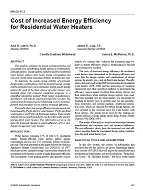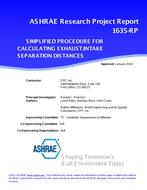There is a clear lack of information on exposure to indoor air pollution and its health impacts in most of the countries of the Region. World Health Organization (WHO) and other international organizations estimated the burden of exposure to some indoor air pollutants, which turned to be very high in the Region: burning dirty fuels for cooking, heating and lightings kills more than 200,000 people annually, and 2nd hand smoke kills another 40,000 people annually. Levels of other pollutants are not monitored and its health impacts are not known. Several other sources of indoor air pollution exist in the region but are not properly monitored including: use of kerosene, charcoal and other dirty fuels; chemicals from cleaning products; gases including radon seeping through the foundations; Carbon Monoxide from attached garages; chemical fumes through paints and solvents; chemicals released from modern building materials and furniture; and mold and bacteria. Pollutants penetrating from the ambient air to the indoor environment are significant sources of indoor air pollution. Unfortunately, the relation between outdoor and indoor air quality is not understood and poorly documented. Several gaps of knowledge on issues related to indoor air pollution are clear and need to be bridged through scientific research, including: Levels of exposure to indoor air pollutants such as particulate matter, NOx, SOx, CO, VOC, PAHs; Poor health surveillance systems that cannot capture health outcomes related to indoor air pollution; the relation between indoor and outdoor air pollution at national and local levels; and efficiency of HVAC systems in reducing indoor air pollutants.
Citation: Second International Conference on Energy and Indoor Environment for Hot Climates, Doha, Qatar, February 2017
Product Details
- Published:
- 2017
- Number of Pages:
- 8
- Units of Measure:
- Dual
- File Size:
- 1 file , 1.4 MB
- Product Code(s):
- D-HCC17-06


